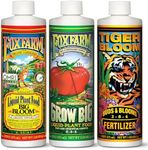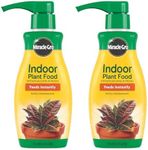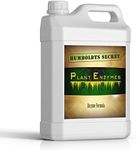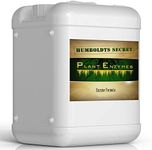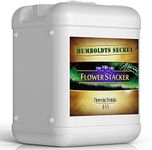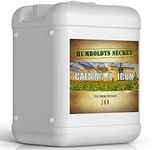Buying Guide for the Best Houseplant Fertilizers
Choosing the right houseplant fertilizer is essential for the health and growth of your indoor plants. Fertilizers provide essential nutrients that plants need to thrive, and selecting the right one can make a significant difference in their overall well-being. When picking a fertilizer, consider the type of plants you have, their growth stage, and specific nutrient requirements. Here are some key specifications to help you make an informed decision.NPK RatioThe NPK ratio stands for Nitrogen (N), Phosphorus (P), and Potassium (K), which are the primary nutrients in fertilizers. Nitrogen promotes leafy growth, phosphorus supports root development and flowering, and potassium enhances overall plant health. The ratio is usually displayed as three numbers (e.g., 10-10-10). For leafy plants, a higher nitrogen content is beneficial, while flowering plants may need more phosphorus. Choose a balanced ratio for general use or a specific ratio based on your plant's needs.
Fertilizer TypeFertilizers come in various forms, including liquid, granular, and slow-release. Liquid fertilizers are fast-acting and easy to apply, making them ideal for quick nutrient boosts. Granular fertilizers are sprinkled on the soil and provide nutrients over time. Slow-release fertilizers gradually release nutrients over several months, reducing the need for frequent applications. Consider your convenience and the specific needs of your plants when choosing the type.
Organic vs. SyntheticOrganic fertilizers are made from natural sources like compost, manure, and bone meal, and they improve soil health over time. Synthetic fertilizers are chemically formulated and provide immediate nutrient availability. Organic options are generally safer for the environment and beneficial for long-term soil health, while synthetic fertilizers offer precise nutrient control and quick results. Choose organic if you prefer natural gardening practices or synthetic for immediate nutrient needs.
MicronutrientsIn addition to NPK, plants need micronutrients like iron, magnesium, and zinc for optimal growth. These are often included in fertilizers in smaller amounts. Micronutrients are crucial for specific functions like chlorophyll production and enzyme activation. Check the fertilizer label for a complete list of nutrients to ensure your plants receive a well-rounded diet. If your plants show signs of micronutrient deficiencies (e.g., yellowing leaves), choose a fertilizer that includes these essential elements.
Application FrequencyDifferent fertilizers have varying application frequencies, ranging from weekly to every few months. Liquid fertilizers often require more frequent applications, while slow-release options can last for several months. Consider your schedule and how often you can tend to your plants. If you prefer less frequent maintenance, a slow-release fertilizer might be the best choice. Always follow the manufacturer's instructions to avoid over-fertilizing, which can harm your plants.
Plant-Specific FormulasSome fertilizers are formulated specifically for certain types of plants, such as succulents, orchids, or flowering plants. These formulas are tailored to meet the unique nutrient requirements of those plants. If you have a diverse collection of houseplants, you might benefit from using plant-specific fertilizers to cater to their individual needs. For a more straightforward approach, a general-purpose fertilizer can be used for a variety of plants.


